Going to the gym has been super stressful, simply because there are so many people there. And apparently, this is a universal phenomenon. Because when a new year starts, it brings with it your resolution books and your “new year, new me” attitude. And the most popular one is to get fitter. But, that’s a personal goal. As a business, you need to focus on your growth as well. And how do you have a business that is healthy, wealthy and thriving? By having your own resolution for the year. And the best one you can take is: I will bring increase the lead conversion rate for my business.
But before you go about achieving this goal, you need to have a concrete plan in mind first. So let me help with your business goal for 2024. Here are 22 efficient strategies that will help you streamline your sales process and drastically increase your lead conversion rates.
1. Build the perfect buyer persona
Before you start selling or even designing a product or service, the very first question that you need to ask yourself is this: “Who am I selling my business to?” You might wonder why building a buyer persona is important. Let’s take the example of a summer camp designed for high schoolers. You’d think that your target audience is pretty straightforward. You have to sell to high schoolers. But they are just your end users.
The actual people who will be buying your products are not really your end users. In this case, it is most likely, their parent or guardian who will make the final purchase. However, there is a possibility that the teenager will have the power to influence the buyer’s decision. Hence when you start your planning you need to keep your end user, your influencer and the final buyer as your ideal target audience.
Having a target audience makes planning your sales and marketing activities that much easier.
Related: How to create highly useful college student persona
2. Do a SWOT analysis
Before entering any market or even for an existing market, you need to have a thorough understanding of it to get them to buy from you. The best way to do this is a quick SWOT (strength, weakness, opportunity, threats) analysis. If you haven’t done this already for your business, use this New Year as an opportunity to take a fresh look into the status of your market.
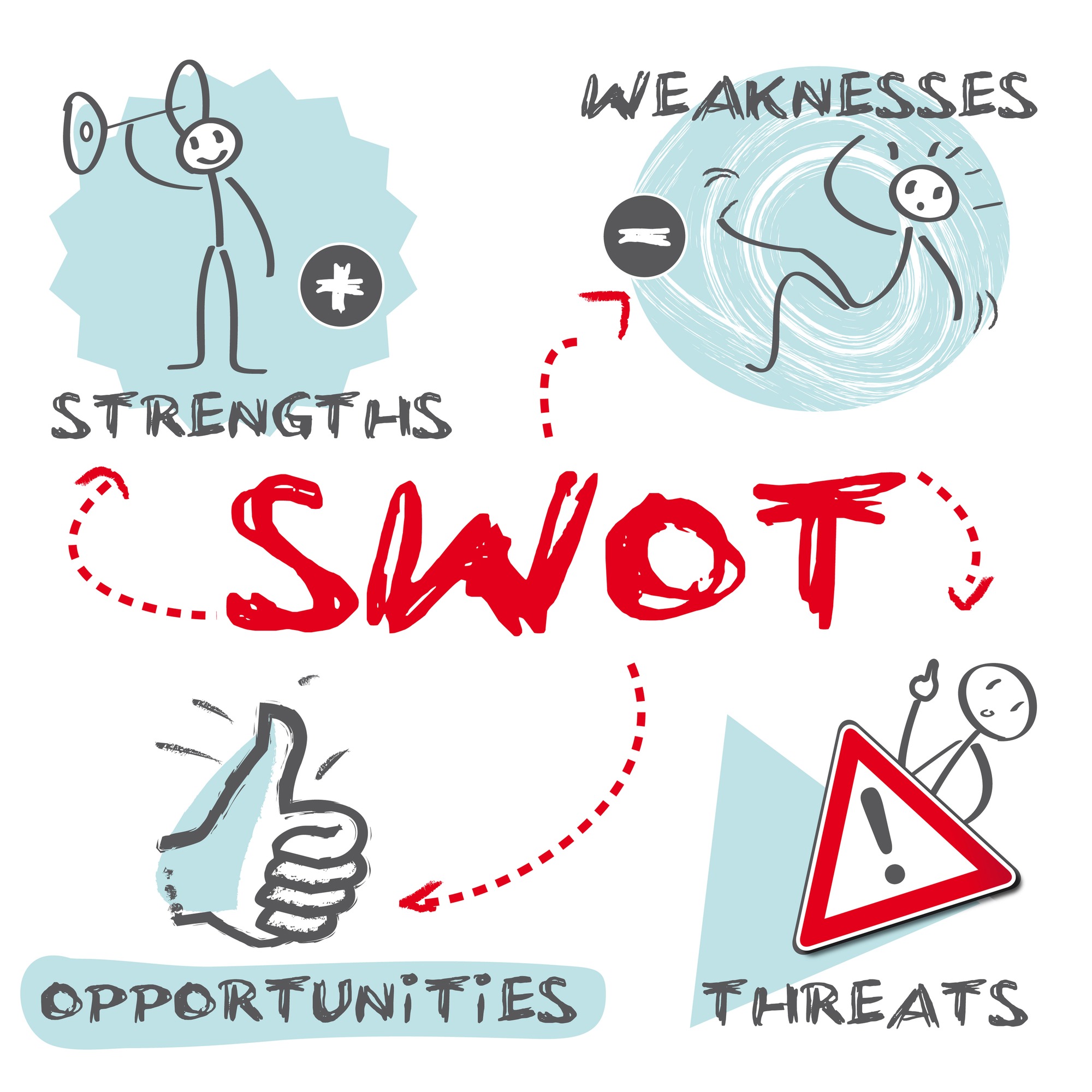
The process is pretty straightforward. You will need to analyze the market in terms of audience, their buying preference, the most dominant income category, and also your competition. This is a pretty important step in your market analysis, as you need to know who else is in your market and what has been working and not working for them.
3. Map your lead sources
If you have done the previous two steps, then you would know who your audience is and who your competition is. The next step is to get them to come to you. But, in order to do that, you need to know where they are present, both online and offline. You need to make a list of your best lead sources, where your target audience is most likely to find you.
For example, if you think your audience will be consuming a lot of video content, then you need to showcase your business on channels such as Youtube or even Facebook and Instagram video ads. These will increase your visibility and help you stay on top of the minds of your audience. But, remember to get yourself a good lead capture tool that will help you to ensure that you have a track of all your leads without any leakage.
4. Build a sales funnel
While strategizing for your business, visualizing always helps. A sales funnel will help you do just that. You can track how many leads are making contact with your business, who is becoming a potential prospect for your business, and who finally becomes a customer.
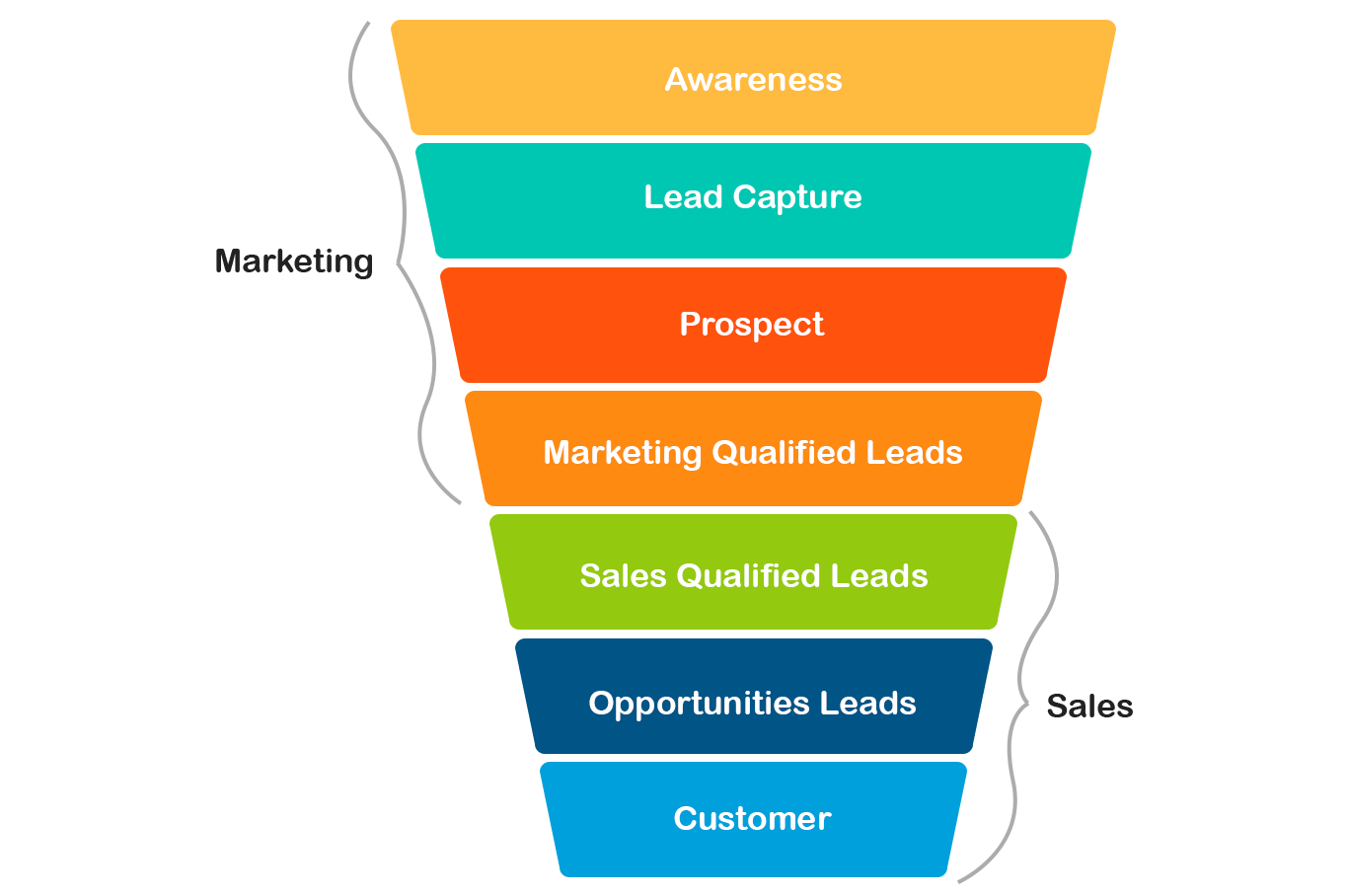
Build different stages within this funnel that will let you know what is happening within the leads at a quick glance. You will be able to figure out exactly what is happening when. Additionally, you will also be able to tell what went wrong when and how.
5. Hire the perfect team
This the step that most people get wrong. There is no point in strategizing and planning a perfect sales process if you don’t equip yourselves with salespeople who will make your dreams a reality. Set a hiring benchmark with your HR team and design screening processes that will ensure that likeminded sales reps are hired for your sales team. A wrong personnel fitment will just end in negative results.
6. Ensure wholesome sales training
They say that very few are born salesman, and the rest need to be taught how to sell. It’s not enough to just have a team that has the ‘right’ skills that are needed for a salesperson. You need to get your sales veterans to share their knowledge with their younger peers.
This process applies not just for the sales team but for also for your marketing team. Teach them how to attract leads with the intention of selling. The mistake many people make is having a sales course when they join the organization and then letting them be. The best way to keep it fresh in their minds is to occasionally have a refresher course or just have a knowledge sharing session, where they can share the tactics and tricks that worked best for them.

7. Have an automated lead distribution system
You’d be surprised at the number of companies who still use an excel sheet and randomly assign their leads to their reps. Even worse, there are some cases where the leads are like an open bag of sweets, and anyone can pick and choose the ones they want. Naturally, the best ones are gone to the ones who come first and sometimes duplicate leads get assigned to multiple sales reps.

Which is why having a good tool, that tracks every lead that comes in and then distributes it to your entire team is a good idea. You can have many criteria for your distribution. This could be based on zip code, product interested in, demography or even based on the expected revenue.
Check out – LeadSquared lead distribution software
8. Prioritize your leads
Is your salesperson still just calling all the leads assigned to them in no particular order? Then, vow to yourself that you will not let this happen in 2024. 30-50% of sales goes to the person who responds first. Hence, you need to have a system in place that lets your salesperson know of the leads that have a higher likelihood to close fast. But, how do you do this?
You need to have an intelligent system, that can quickly evaluate leads and assign a quality score or a priority score to them based on various factors. This could be based on their activities on your website, their communication with your sales team, their demographical profile or even how much revenue can be got from them. These priority scores will automatically tell your team who to call first and who can wait for a while.
9. Set up a call center system
You know the saying, “Jack of all trades, master of none”, don’t you? Most sales teams qualify hundreds of leads, and then maintain a pipeline to follow up, and then finally close it. This leads to slips between the cracks and sometimes really good leads get missed out on or not nurtured enough.
Have a dedicated call center team, even if it’s just one person, whose main job is to qualify all the leads that come your way. This way only genuinely interested people will pass onto your sales team.
10. Track your lead activities
Your work is not done once you capture leads and get them into your pipeline. It’s important to constantly nurture and engage them to push them to become your customers. Have a lead tracking system in place, that helps you track what the leads are doing on your website and how they are interacting with your business helps you keep up to date with your business.
Not only that, anyone from your team will be able to know all about the lead with just a quick glance at their activity history. It can also serve as a refresher to salespeople who have hundreds of leads to their name.
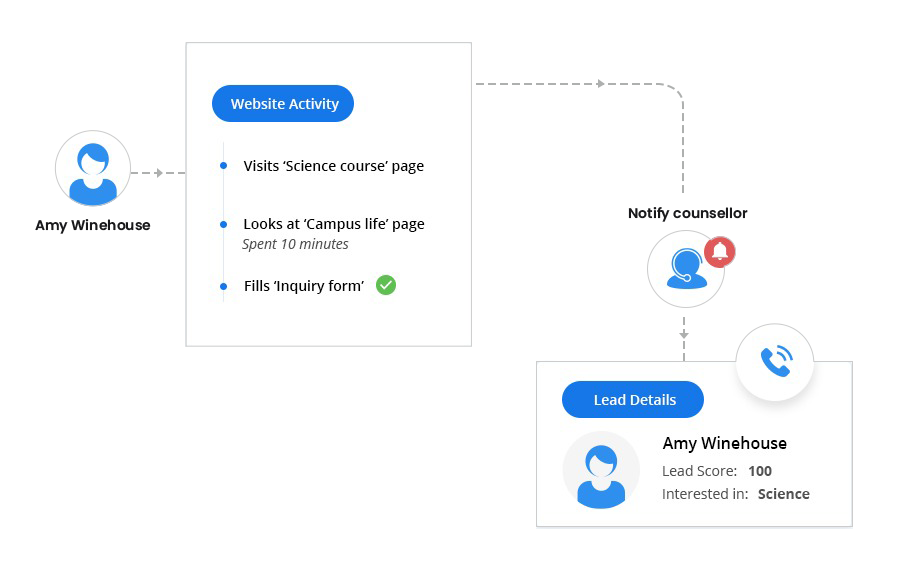
11. Constantly nurture your leads
Nurtured leads experience a 23% shorter sales cycle. The best mantra for you to follow is to never ignore any lead that comes your way even if they have no apparent requirement for your product or service. You can keep nurturing them with educational or promotional emails so that you remain on the top of the mind.
12. Set clear conversion goals
Some businesses are not really sure how to measure their conversions. And as a result, sometimes set unachievable targets for their sales and marketing teams. You need to set clear goals for your teams. If your marketing teams job is to get people to sign up for more free trials, then you should set a target for them keeping in mind historical data.
13. Know what your sales team is doing
No matter how much you try to be a good boss and want to trust your sales team to do their own thing, the reality is a little harsh. Even the best of salespeople need some sort of accountability. Which is why you should look at a good sales management tool, that will help you keep a check on what your sales team is doing. You can know what emails are being sent out, how many calls are being made and how much revenue they are bringing. In addition to keeping them in check, you also get to know clearly when something goes wrong and why.
14. Define sales KPIs
A key performance indicator or KPI is the metrics that can help teams and their leaders gauge how effective their efforts are.
They help organizations gain an insight into the functioning of the sales departments and some potential roadblocks the sales reps might face in their sales journey- from getting a lead to making them your repeat customers.
As a manager or a team lead, define the KPIs important to achieve your goals and measure them regularly. You can also use a CRM dashboard and customize it for the metrics you wish to track.
Also read: 32 important sales KPIs for success
15. Measure, measure, and measure!
Without good reporting, you will keep doing things with no results. Have a tool that helps you with detailed reports on everything you do. Right from your best lead source, marketing campaign performance, salesperson performance and even the product/service that brings in the best revenue. A good analytics tool will help you make better business decisions, as you will know clearly what is happening and why.
Also read: How to measure incremental sales
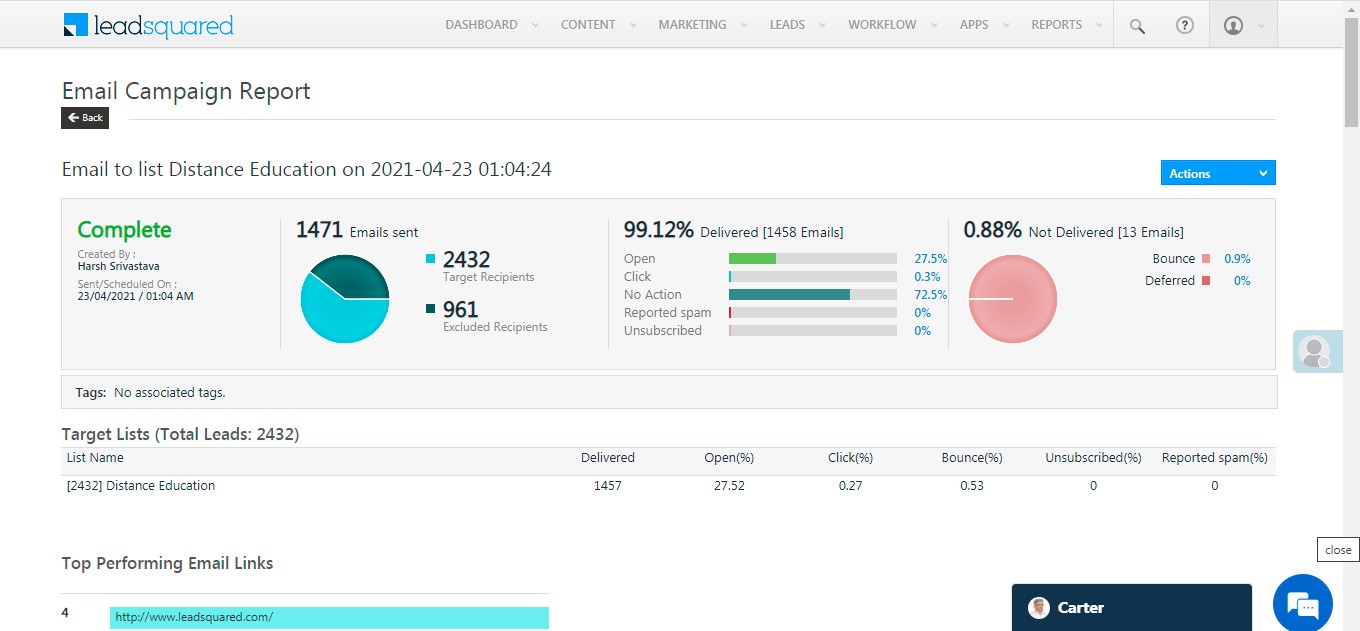
16. Set up an incentive program
If you want your sales reps to perform well and give you results, you need to take care of them yourself. Set up a transparent reward system that appreciates their contribution either through monetary profits or through an award system. Feeling appreciated makes them want to work more and ultimately bring in more revenue for your business.
Also read: Sales SPIFF – examples and ideas to motivate your team
17. Display happy reviews from your customers
How many times have you purchased a product or booked a service because your friend or family used it and loved it? Or how many times have you taken the time to read reviews before a purchase? Word-of-mouth is probably the best way to get more new customers.
Ask your best and most satisfied customers to write reviews for you. Give them the incentive to do so. Give them more reward points for a review or offer them an Amazon gift card for the reviews they write
18. Encourage customer referrals
You can also have a referral program in place. A lot of companies have this system in place. The best example I can give is when the cab rental giants Ola and Uber entered the Indian market. The more people you refer, the more cheap cab rides!
You can replicate the same, giving discounts, an extended month’s subscription etc. This will motivate your customer to talk about you to their friends and family as well.
19. Be on social media
Social media is not just a means of lead generation, it can also be used as a place to resolve differences. You cannot always make every customer happy. There will always be that one disgruntled customer who has a list of complaints. But, you need to ensure that they have space where they can make a complaint.
Sometimes, customers take to social media to make their complaints public. If you are on social media, you can quickly resolve their issues or at least reassure them. But if you are not, you may never know of the issue, and worse, your reputation may be damaged. This will have a direct impact on your lead conversion percentage.
20. Embrace remote selling strategies
While people are keen to work from the office after the coronavirus pandemic ends, the trend of remote or virtual selling is here to stay. In fact, 74% of CSOs (Chief Sales Officers) have recently updated or are updating their seller skills profile to include virtual selling, according to Gartner.
From prospecting to lead nurturing or engagement and onboarding, customer and companies prefer online modes wherever possible.
So, the best bet would be to prepare yourself for the remote sales process.
21. Create a transparent support system
Following up on the point above, have a good support team in place, that offer round the clock support. This will prevent your customers from taking their grievances public. Bad customer support is one of the most common reasons why people stop buying from a business. On the other hand, good customer support can make them loyal users.
22. Improve customer CLV
While new customer acquisition helps achieve your expansion goals, retention helps keep your revenue stream intact. Therefore, for sustainable growth, you must devise strategies to balance your customer acquisition and retention efforts.
There are several ways to improve customer retention and boost CLV. The simplest is to identify when your customer needs something (an upgraded version of your software or add on) and accordingly up-sell or cross-sell. You can also use your CRM software to identify such opportunities.
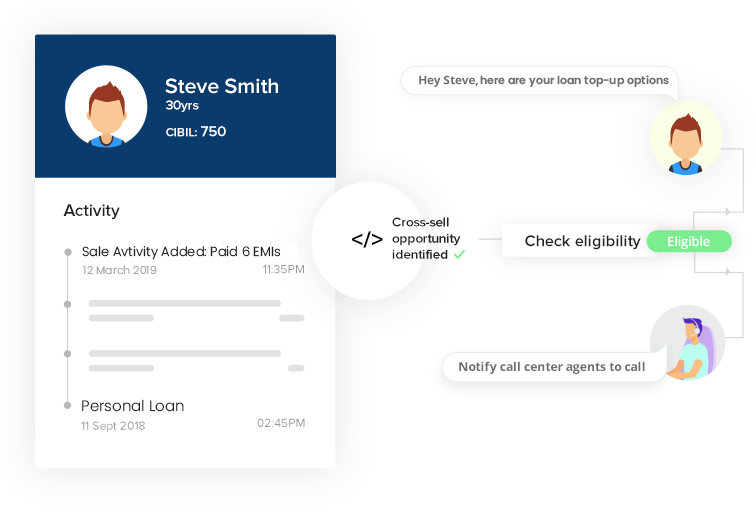
Also read: 6 ways to boost CLV
So voila! There you have it. 22 different lead conversion strategies or resolutions that you need to take to make 2024 the best for your business! Looking for a tool that can help you make these resolutions a reality? Give LeadSquared a try!







